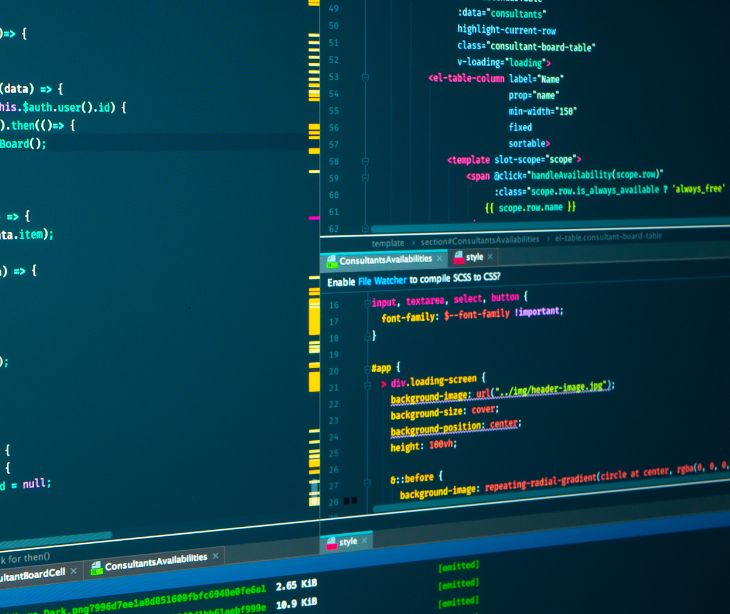
Cross-site scripting (XSS) is a web security issue that happens when an attacker exploits vulnerabilities in a web application. This vulnerability allows attackers to bypass the security that separates different websites from each other and access users' data. They can then pretend to be the user and do things on their behalf.
How cross-site scripting works
Cross-site scripting manipulates a vulnerable website to return malicious JavaScript to users. When this malicious code executes within a victim's browser, the attacker can fully compromise their interaction with the application. This allows them to carry out unauthorized actions and retrieve sensitive data.
Types of XSS Attacks
There are three main types of XSS attacks: Reflected XSS, Stored XSS, and DOM-based XSS.
Reflected cross-site scripting
Reflected XSS is the simplest form of XSS. It occurs when an application includes data from an HTTP request directly in its response without proper validation or sanitization. Attackers can exploit this vulnerability by injecting malicious scripts into the request data. When users interact with the vulnerable page and trigger the execution of the injected script, the attacker gains control over their session and can perform actions and access data on their behalf.
Stored cross-site scripting
Stored XSS, or persistent or second-order XSS, arises when an application includes untrusted data in its responses from a database or another untrusted source. This can happen when users submit data, such as comments or messages, which are displayed to other users. If the application fails to properly sanitize this data, attackers can inject malicious scripts that are stored and executed whenever the vulnerable page is accessed by other users.
DOM-based cross-site scripting
DOM-based XSS, also called DOM XSS occurs when an application's client-side JavaScript processes untrusted data in an unsafe manner, typically by directly manipulating the Document Object Model (DOM). Attackers can exploit this vulnerability by controlling the value of an input field, for example, and injecting a malicious script that gets executed when the vulnerable JavaScript code reads and writes to the DOM.
Read also: Common cyberattack vectors
Potential consequences of XSS attacks
An attacker who successfully exploits an XSS vulnerability can achieve various malicious objectives:
- Impersonation: They can impersonate or masquerade as the victim user.
- Unauthorized actions: Attackers can carry out any action the user can perform within the application.
- Data access: They can read any data the user has access to, potentially compromising sensitive information.
- Credential theft: Attackers may capture the victim user's login credentials.
- Defacement: They can virtually deface the website by modifying its appearance or content.
- Trojan injection: Attackers can inject malicious code into the website, potentially compromising other users or spreading malware.
The impact of an XSS attack depends on various factors, such as the nature of the application, the sensitivity of the data it handles, and the privileges of the compromised user. While the impact may be minimal in some cases, it can be severe in applications dealing with sensitive data or those granting elevated privileges to compromised users.
Go deeper:
Preventing XSS attacks
Preventing XSS vulnerabilities involves a combination of measures to ensure the security of user-controllable data:
- Filter input: Apply strict input filtering at the point where user input is received, based on expected or valid input. This prevents malicious scripts from being accepted.
- Encode output: Encode user-controllable data before including it in HTTP responses to prevent it from being interpreted as active content.
- Use response headers: Utilize appropriate response headers to guide browser interpretation and prevent unintended execution of scripts in HTTP responses.
- Content security policy (CSP): Implement a content security policy to mitigate the impact of XSS vulnerabilities further. CSP allows you to define a whitelist of trusted sources for scripts, stylesheets, and other resources, reducing the risk of executing malicious code.
In the news
SecurityWeek reports that over 2 million jobseekers' personal data and email addresses were stolen by the ResumeLooters operation through SQL injection and cross-site scripting attacks on 65 websites, mainly in retail and recruitment sectors across India, Taiwan, and Thailand. The campaign also targeted sites in the U.S., Brazil, Japan, Russia, Italy, and the Philippines, using open-source tools and XSS scripts to compromise job search platforms. Group-IB's report warns of potential risks beyond data exposure, as advanced persistent threat (APT) groups could exploit this information for targeted attacks on individuals.
FAQs
What is XSS and how does it relate to healthcare security?
Cross-site scripting (XSS) is a type of cyberattack where malicious scripts are injected into web pages viewed by other users. In healthcare, XSS attacks can exploit vulnerabilities in web applications, compromising patient data, and potentially violating HIPAA’s security and privacy requirements.
Why is XSS a concern for HIPAA compliance in healthcare settings?
XSS is a concern because it can lead to unauthorized access to protected health information (PHI) stored or transmitted by compromised web applications. Successful XSS attacks can result in data breaches, financial penalties, and damage to the organization’s reputation for not safeguarding patient information.
What are the potential risks associated with XSS under HIPAA?
Potential risks of XSS attacks include:
- Data exposure: Unauthorized access to patient records and medical data through compromised web applications.
- Session hijacking: Theft of session cookies or credentials used to access sensitive information.
- Malware distribution: Injection of malicious scripts to redirect users to phishing sites or download malware.
- Website defacement: Alteration of web content to mislead users or damage the organization’s reputation.
Subscribe to Paubox Weekly
Every Friday we'll bring you the most important news from Paubox. Our aim is to make you smarter, faster.




